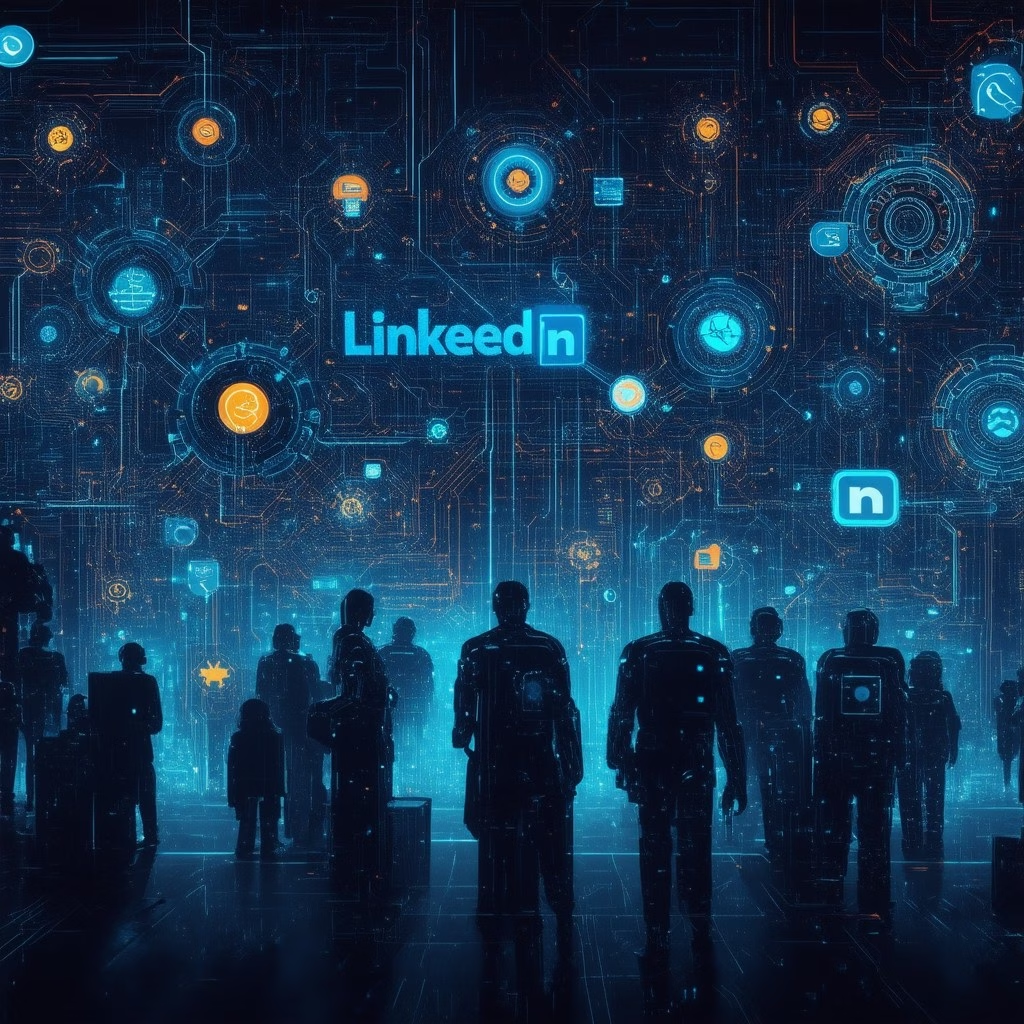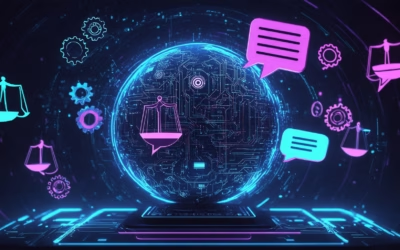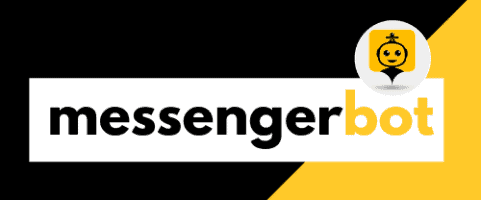Key Takeaways
- Understand LinkedIn Bots: Learn how LinkedIn Messenger Bots operate and how to identify genuine interactions versus automated messages.
- Spotting Fake Bots: Recognize signs of fake LinkedIn bots by analyzing profile completeness, message patterns, and engagement styles.
- Regulatory Compliance: Familiarize yourself with LinkedIn’s strict policies on bot usage to avoid account penalties and ensure ethical marketing practices.
- Effective Automation: Implement LinkedIn messenger bots strategically to enhance lead generation, customer engagement, and content distribution.
- Verify Message Authenticity: Utilize profile verification techniques and safety tools to discern real messages from potential scams.
- Focus on Personalization: Personalize automated messages to improve engagement and foster meaningful connections on the platform.
In the rapidly evolving digital landscape of 2025, understanding the LinkedIn Messenger Bot ecosystem is crucial for professionals and businesses alike. As automation becomes increasingly prevalent, many users find themselves asking, “Do bots message you on LinkedIn?” This article will delve into the intricacies of LinkedIn bots, exploring their role in messaging, the legality of their use, and how to distinguish between authentic and fake bots. We will also address pressing concerns about LinkedIn messaging not working and provide insights on leveraging LinkedIn Messenger Bots for effective marketing strategies. By the end of this article, you will be equipped with the knowledge to navigate the LinkedIn Messenger landscape confidently, ensuring that your interactions—whether automated or personal—enhance your networking experience. Join us as we uncover the potential of LinkedIn Messenger Bots and how they can drive business growth while maintaining the integrity of your communications.
Do Bots Message You on LinkedIn?
Understanding the Role of LinkedIn Bots in Messaging
Bots on LinkedIn can indeed send messages, and they are designed to imitate real users. These automated accounts often have profile pictures, job histories, and can initiate conversations. However, distinguishing them from genuine users can be tricky due to their sophisticated programming. Understanding how these bots operate is essential for maintaining a safe and productive LinkedIn experience.
Identifying LinkedIn Bots
- Profile Analysis: Bots often have incomplete profiles or generic information. Look for profiles lacking detailed work history or connections.
- Message Patterns: Bots typically send templated messages that lack personalization. If a message feels overly generic or robotic, it may be from a bot.
- Engagement Style: Genuine users engage in meaningful conversations, while bots may respond with short, irrelevant answers or fail to follow up.
- Connection Requests: Be cautious of accounts that send connection requests without a clear reason or mutual connections.
Common Types of Bots on LinkedIn
- Spam Bots: These bots aim to promote products or services and often send unsolicited messages.
- Phishing Bots: Designed to extract personal information, these bots may ask for sensitive details under the guise of legitimate inquiries.
- Recruitment Bots: Some bots are programmed to reach out to potential candidates, often using automated messages to gauge interest.
Are LinkedIn Bots Allowed?
Understanding the regulations surrounding LinkedIn bots is crucial for anyone looking to leverage automation on this professional networking platform. While the idea of using a LinkedIn messenger bot may seem appealing for enhancing communication and outreach, it’s essential to recognize the limitations imposed by LinkedIn’s policies.
LinkedIn’s Policies on Automation and Bots
LinkedIn strictly prohibits the use of bots, crawlers, and any third-party software that automates activities on its platform. According to LinkedIn’s official guidelines, these tools can compromise user data security and violate the integrity of the website. Specifically, LinkedIn does not allow browser extensions or plugins that scrape data, alter the site’s appearance, or automate user interactions. The use of such software can lead to account restrictions or bans, as LinkedIn actively monitors for unauthorized access and behavior. For instance, automated messaging or connection requests can be flagged as spam, resulting in penalties for the user. For more detailed information, you can refer to LinkedIn’s Help Center, which outlines their policies on prohibited software and the importance of maintaining a secure and trustworthy environment for all users.
The Legality of Using LinkedIn Bots for Marketing
While the concept of a LinkedIn messenger bot for marketing may seem beneficial, it’s important to navigate these waters carefully. Engaging in practices that violate LinkedIn’s terms can lead to significant repercussions, including account suspension. Instead, businesses should focus on compliant marketing strategies that enhance user engagement without crossing ethical boundaries. Utilizing legitimate tools and platforms that align with LinkedIn’s policies can help maintain a positive presence on the network. For instance, exploring options like Brain Pod AI can provide innovative solutions for marketing while adhering to platform guidelines.
Are there fake bots on LinkedIn?
Yes, there are indeed fake bots on LinkedIn, often referred to as LinkedIn sales bots. These bots can be deceptive and may attempt to connect with users for various purposes, including spamming or phishing. Here’s how to identify and protect yourself from these fake bots:
Identifying Authentic LinkedIn Bots vs. Fake Ones
- Profile Analysis:
- Generic Photos: Fake LinkedIn bots frequently use generic profile pictures, such as stock images or photos of models, which lack authenticity. A legitimate profile typically features a real photo of the user.
- Incomplete Profiles: Many bots have minimal information in their profiles, lacking detailed work history, endorsements, or connections. Genuine users usually have comprehensive profiles that reflect their professional background.
- Message Characteristics:
- Impersonal and Generic Messages: Bots often send messages that are vague and do not reference specific details about your profile or industry. Look for messages that feel automated or overly scripted.
- Sales Pitches: If the initial message focuses heavily on selling a product or service without establishing a connection, it may be a bot.
The Risks of Interacting with Fake LinkedIn Bots
- Connection Patterns:
- High Connection Requests: Bots may send numerous connection requests in a short period. If you notice a profile with many connections but little engagement, it could be a red flag.
- Rapid Engagement: Fake bots may engage with posts or comments excessively and in a robotic manner, lacking genuine interaction.
- Verification Steps:
- Profile Verification: Check for mutual connections or endorsements. A legitimate user is likely to have connections within your network.
- Direct Communication: If unsure, initiate a conversation. Genuine users will engage in meaningful dialogue, while bots may struggle to respond appropriately.
- Reporting and Blocking:
- Utilize LinkedIn’s Reporting Tools: If you suspect a profile is a bot, report it to LinkedIn. This helps maintain the integrity of the platform.
- Block Suspicious Accounts: Blocking bots can prevent them from contacting you further.
By being vigilant and employing these strategies, you can protect yourself from fake LinkedIn sales bots and ensure a safer networking experience. For further reading on this topic, consider checking resources from LinkedIn’s official help center and cybersecurity blogs that discuss social media safety.
Can I automate LinkedIn messaging?
Yes, you can automate LinkedIn messaging using various tools and strategies that enhance your outreach while maintaining compliance with LinkedIn’s policies. Here’s a comprehensive guide on how to effectively automate LinkedIn messaging in 2025:
- Choose the Right Automation Tool:
- Tools like Zapier, Dux-Soup, and Phantombuster are popular for automating LinkedIn messaging. These platforms allow you to schedule messages, send connection requests, and follow up with prospects automatically.
- Personalization is Key:
- While automation can save time, it’s crucial to personalize your messages. Use the recipient’s name and reference mutual connections or shared interests to increase engagement. Research shows that personalized messages have a higher response rate (source: HubSpot).
- Set Up a Messaging Sequence:
- Create a sequence of messages that guide your prospects through a conversation. Start with an introduction, followed by value-driven content, and conclude with a call to action. This structured approach can lead to more meaningful interactions.
- Monitor Engagement and Adjust:
- Regularly track the performance of your automated messages. Tools like LinkedIn Analytics can help you assess open rates and responses. Adjust your messaging strategy based on what resonates with your audience.
- Compliance with LinkedIn Policies:
- Ensure that your automation practices comply with LinkedIn’s user agreement to avoid account restrictions. LinkedIn discourages excessive automation and spammy behavior. Always prioritize genuine interactions over sheer volume.
- Consider Using Chatbots:
- While LinkedIn does not support Messenger Bots directly, integrating chatbots on your website or other platforms can complement your LinkedIn strategy. They can handle initial inquiries and direct users to your LinkedIn profile for further engagement.
Benefits of Using a LinkedIn Messenger Bot for Automation
Utilizing a LinkedIn messenger bot can significantly enhance your outreach efforts. Here are some key benefits:
- Time Efficiency: Automating LinkedIn messaging allows you to focus on other critical tasks while the bot handles routine communications.
- Consistent Engagement: A messenger bot ensures that your audience receives timely responses, maintaining engagement even outside business hours.
- Scalability: As your network grows, a LinkedIn messenger bot can manage increased messaging volumes without compromising quality.
- Data-Driven Insights: Many automation tools provide analytics that help you understand user interactions and refine your messaging strategy.
- Cost-Effective Marketing: By leveraging a LinkedIn messenger bot, you can reduce the need for extensive manual outreach, saving time and resources.
How to know if a LinkedIn message is real?
Determining the authenticity of a LinkedIn message is crucial to maintaining your online safety and professional integrity. Here are key indicators to help you identify whether a message is genuine:
- Profile Verification: Check if the sender’s profile is complete. A legitimate LinkedIn user typically has a professional photo, a detailed work history, endorsements, and connections. Look for mutual connections, as this can indicate authenticity.
- Message Content: Analyze the content of the message. Genuine messages often include personalized details relevant to your professional background or shared interests. Be wary of generic messages that lack specificity.
- Language and Tone: Authentic messages usually maintain a professional tone and proper grammar. Messages filled with typos, slang, or overly casual language may be suspicious.
- Request for Personal Information: Be cautious if the message requests sensitive information, such as passwords or financial details. Legitimate users will not ask for this information through LinkedIn.
- Links and Attachments: Avoid clicking on links or downloading attachments from unknown senders. Scammers often use these tactics to spread malware or phishing attempts.
- Cross-Verification: If in doubt, cross-check the sender’s identity through other platforms or by reaching out directly via a different communication method.
- Use of Messenger Bots: Some legitimate businesses may use Messenger Bots for outreach. If the message seems automated, look for signs such as quick responses or repetitive phrasing. However, ensure that the bot is from a verified source.
For further reading on identifying fraudulent messages, refer to LinkedIn’s official safety tips and resources available on their Help Center. Additionally, cybersecurity resources like the Federal Trade Commission (FTC) provide guidelines on recognizing and avoiding scams.
Tools and Techniques to Verify LinkedIn Messages
To enhance your ability to verify LinkedIn messages, consider utilizing various tools and techniques:
- LinkedIn’s Safety Features: Leverage LinkedIn’s built-in safety features, such as reporting suspicious messages or users. This helps maintain a secure environment for all users.
- Third-Party Verification Tools: Use third-party tools that specialize in verifying online identities. These tools can provide additional insights into the sender’s credibility.
- Networking with Trusted Connections: Reach out to mutual connections to verify the sender’s identity. Trusted contacts can provide valuable information about the legitimacy of the message.
- Professional Forums: Engage in professional forums or communities, such as LinkedIn Messenger Bot Reddit, where users share experiences and tips on identifying real versus fake messages.
By employing these tools and techniques, you can significantly reduce the risk of falling victim to scams and ensure that your LinkedIn interactions remain professional and secure.
How do I know if a message is from a bot?
To determine if a message is from a bot, consider the following indicators:
- Language and Tone: Bot-generated messages often lack the nuances of human communication. Look for overly formal language, repetitive phrases, or a robotic tone that feels unnatural. Bots may struggle with idiomatic expressions or cultural references, leading to awkward phrasing.
- Contextual Understanding: Chatbots typically rely on algorithms and data patterns, which can result in responses that miss the context of the conversation. If the reply seems irrelevant or fails to address your specific question, it may be generated by a bot.
- Response Time: Bots can respond almost instantaneously, while human responses may take longer due to the need for thought and consideration. If a message arrives too quickly after your inquiry, it could be a sign of automation.
- Repetitiveness: If you notice the same phrases or responses being used across different interactions, it’s likely that a bot is generating the content. Human communication tends to be more varied and personalized.
- Lack of Personalization: Bots often provide generic responses that do not take into account previous interactions or specific user details. If the message feels impersonal or generic, it may be from a chatbot.
- Error Patterns: While humans make typographical errors, bots may produce unusual grammatical structures or nonsensical sentences that indicate a lack of understanding. Pay attention to any odd phrasing or syntax that seems off.
- Complex Queries: If you ask a complex or nuanced question and receive a simplistic or irrelevant answer, it’s a strong indication that a bot is at work. Bots may struggle with multi-layered inquiries.
For further insights, refer to studies on chatbot communication and user interaction, such as those published by the Association for the Advancement of Artificial Intelligence (AAAI) and research from the Stanford University Human-Computer Interaction Group, which explore the limitations and capabilities of chatbot technology.
Common Characteristics of LinkedIn Messenger Bots
LinkedIn Messenger Bots exhibit several common characteristics that can help you identify them:
- Automated Greetings: Many LinkedIn Messenger Bots initiate conversations with pre-set greetings or questions, often lacking a personal touch.
- Structured Responses: These bots typically provide structured answers to common queries, which can feel formulaic and less conversational.
- Limited Contextual Awareness: Bots may struggle to maintain context over multiple messages, leading to disjointed conversations.
- Prompt for Information: Bots often ask for specific information to proceed, such as your email or job title, which can feel intrusive if not handled well.
- Integration with Marketing Tools: Many LinkedIn Messenger Bots are integrated with marketing platforms, allowing them to send promotional messages or updates automatically.
Understanding these characteristics can help you navigate your interactions on LinkedIn more effectively. If you’re looking to enhance your LinkedIn experience, consider exploring options like the LinkedIn Messenger Bot for marketing strategies.
Leveraging LinkedIn Messenger Bots for Business Growth
LinkedIn Messenger bots have emerged as powerful tools for businesses looking to enhance their marketing strategies and streamline communication. By automating interactions, these bots can significantly improve engagement and lead generation efforts.
Utilizing LinkedIn Messenger Bots for Marketing Strategies
Implementing a LinkedIn messenger bot can transform your marketing approach. Here are several strategies to consider:
- Automated Lead Generation: By utilizing a LinkedIn messages bot, businesses can automate the process of capturing leads. This involves setting up bots to engage with potential clients through personalized messages, thereby increasing conversion rates.
- Enhanced Customer Engagement: Bots can facilitate real-time interactions, answering queries and providing information about products or services. This immediate response capability can lead to higher customer satisfaction.
- Content Distribution: Messenger bots can be programmed to share relevant content, such as blog posts or promotional materials, directly within LinkedIn messages. This ensures that your audience receives valuable information without needing to navigate away from their current conversation.
Exploring Free and Paid Options for LinkedIn Messenger Bots
When considering a LinkedIn messenger bot, businesses have various options, both free and paid. Free options often provide basic functionalities, suitable for startups or small businesses testing the waters. However, investing in a paid solution can unlock advanced features such as:
- Advanced Analytics: Paid bots typically offer detailed insights into user interactions, helping businesses refine their strategies based on real data.
- Customization: Premium bots allow for greater customization, enabling businesses to tailor the bot’s responses and workflows to better align with their brand voice.
- Integration Capabilities: Many paid bots can integrate with other marketing tools and platforms, enhancing overall marketing efforts and streamlining operations.
For those interested in exploring options, platforms like Brain Pod AI offer innovative solutions that can be integrated with LinkedIn for enhanced messaging capabilities.







